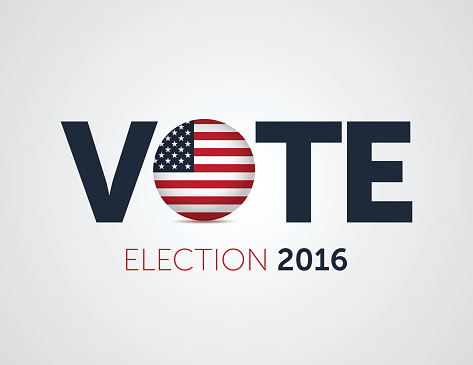By Cliff Ennico
I got a lot of feedback from last week’s column about how small business owners and entrepreneurs should vote in November’s election.
You will recall that I gave two suggestions for small business owners who hadn’t yet made up their minds whom to vote for:
- Focus on the party and its platform, not individual candidates; and
- Focus on your local candidates for Congress and U.S. Senate as the decisions they make will have a broader impact on your day-to-day operations than what the President does.
Most emails were positive, but there were a handful saying that I dodged the bullet by not coming out one way or another for one of the major party candidates for President. The general tone of these emails was “Dude, I can’t see voting either for Trump or Clinton, but I don’t like the idea of not voting at all. What are YOU going to do in November?”
Like any good politician who wants the biggest possible number of “likes” at the polls, I really don’t like taking sides in political contests. No matter which way you go, you risk alienating a sizeable part of your audience that will think you’re an idiot simply because you don’t agree with them.
But I majored in history, not political science, in college. If you take a longer term view of our current political situation, the answer to “what do I do in November?” I think becomes clearer.
Throughout our history, the American people have been blessed when it comes to politics: for the past 240 years we have been ruled by two political parties, each of which spoke for a vast swath of the American public with different and sometimes conflicting viewpoints (for the longest time, the Democratic party was home to both African-Americans and white Southerners). No one party had a monopoly on “liberal” or “conservative” views.
While each party had its extreme elements, the focus was always on the broad center of the American people who didn’t hold strong views one way or the other. While there were some close elections, one party almost always was able to cobble together a majority. Third parties were always on the “fringe” and failed to gain traction, even with charismatic candidates like Teddy Roosevelt and Robert La Follette.
Also, politicians from both parties came from the same social class and ethnic background, and shared a common culture – they were virtually all white males, Judaeo-Christian, of northern European heritage. In situations where the two parties held significantly different positions, party leaders would caucus over gin-and-tonics or martinis, compare their Ivy League ties, reach a compromise, do some “horse trading”, and move forward. It wasn’t perfect, but heck, it got things done.
Today, in the words of Irish poet William Butler Yeats, “things fall apart; the centre cannot hold”. Both major parties are controlled by their extremist wings, and the common WASP-centric culture that used to bridge the political divide has fragmented into the multicultural mess of identity politics. Mitch McConnell, Elizabeth Warren, Ted Cruz and Cory Booker, while all Senators, come from very different universes. We cannot reasonably expect them to communicate, much less co-operate. Or compromise.
I think there’s a good chance that this Presidential election will see a major restructuring, if not the end, of the two-party system in America. If I am right about that, I see two potential outcomes for American politics going forward: (1) a landslide sweep by one party (similar to the Democrats’ win in 1933) that will make America effectively a single-party state like China for the next few decades; or (2) further fragmentation that will lead to the rise of viable third parties clamoring for a piece of the American center.
Given the choice, I would much prefer the second alternative.
Just like we now have thousands of cable TV channels and Internet video streamers tailoring their content to ever narrower audiences, rather than the three broadcast networks us Baby Boom geezers grew up with as kids, it may be time to encourage the development of multiple political parties in the U.S. with a more pluralistic outlook on the issues facing our nation and the world.
I write this with sadness, and not a little trepidation. Just looking at European history, we can see how difficult it is for countries with multiple political parties to achieve political and social stability. Small “splinter” parties can exercise influence totally out of proportion to their numbers. In the German parliamentary elections of 1933, one very small party (with only about 8% of the popular vote), allied itself with Adolf Hitler’s National Socialist party (with only about 44% of the popular vote), and threw Germany under the bootheels of the Nazis.
Yet in an increasingly fragmented America, it will be difficult if not impossible for two major parties to bring enough people “under the tent” to sustain consistent majorities in national elections.
So, given this prediction, what should you do in November? The answer . . . next week.
Cliff Ennico (cennico@legalcareer.com) is a syndicated columnist, author and host of the PBS television series ‘Money Hunt’. This column is no substitute for legal, tax or financial advice, which can be furnished only by a qualified professional licensed in your state. To find out more about Cliff Ennico and other Creators Syndicate writers and cartoonists, visit our Web page at www.creators.com. COPYRIGHT 2016 CLIFFORD R. ENNICO. DISTRIBUTED BY CREATORS SYNDICATE, INC. Follow him at @cliffennico.







